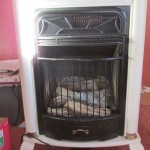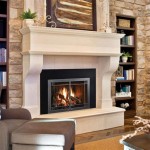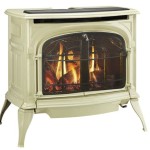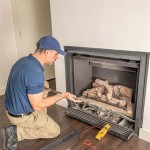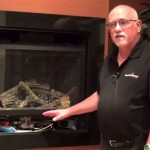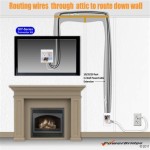Fireplace to Gas Conversion: A Comprehensive Guide
Converting a traditional wood-burning fireplace to a gas fireplace offers numerous advantages, from increased convenience and efficiency to enhanced safety and environmental benefits. This conversion process involves replacing the existing firebox with a gas-powered burner and incorporating a gas line to supply fuel. While it may seem daunting, understanding the process and its implications can help homeowners make informed decisions about whether this upgrade is right for them.
Benefits of Gas Fireplace Conversion
Fireplace to gas conversion presents a compelling solution for homeowners seeking to modernize their fireplace experience. Gas fireplaces offer several significant benefits over their wood-burning counterparts:
- Convenience: Gas fireplaces eliminate the need for chopping, storing, and carrying firewood, simplifying the process of enjoying a cozy fire. With a simple switch, homeowners can quickly and easily ignite a flame.
- Efficiency: Gas fireplaces burn fuel more efficiently than wood-burning fireplaces, reducing the amount of energy needed to produce heat. This translates to lower heating costs and a smaller carbon footprint.
- Safety: Gas fireplaces offer a safer alternative to wood-burning fireplaces, eliminating the risk of sparks, embers, and ash escaping the firebox. They also reduce the risk of chimney fires.
- Cleanliness: Gas fireplaces eliminate the mess associated with wood-burning fireplaces, such as ash cleanup and soot residue. They also produce fewer emissions and contribute to better indoor air quality.
The Conversion Process
The process of converting a fireplace to gas involves several key steps:
- Assessment: A qualified gas fireplace installer will assess the existing fireplace to determine its suitability for conversion. This involves evaluating the firebox size, chimney condition, and access to gas lines.
- Permits: Obtaining necessary permits from the local building department is crucial, ensuring compliance with safety regulations and codes.
- Gas Line Installation: A certified gas fitter will install a gas line to supply fuel to the fireplace, ensuring proper sizing and leak-free connections.
- Firebox Installation: The old firebox is removed, and a new gas-powered burner is installed, typically featuring a realistic gas log set for a traditional look.
- Venting: The existing chimney must be inspected and potentially cleaned or modified to accommodate the gas fireplace's exhaust. This step, along with the installation of a gas vent, is vital for safe operation.
- Testing: Once installed, the gas fireplace is thoroughly tested to ensure proper functionality, including flame patterns and heat output. This step also verifies the gas line for any leaks.
- Cost: The cost of gas fireplace conversion varies based on the size and complexity of the project, including the required permits, gas line installation, and the chosen gas fireplace unit. It's crucial to obtain multiple quotes from reputable installers.
- Availability of Gas: Ensure that natural gas or propane service is readily available to your home. If not, the cost of installing a gas line could significantly impact the project's feasibility.
- Aesthetic Preferences: Gas fireplaces come in various styles and designs, from traditional log sets to contemporary, modern units. Choose a style that complements the existing fireplace and your home's aesthetic.
- Energy Efficiency: Compare the energy efficiency ratings of different gas fireplaces to choose the most efficient model for your home. Look for the Energy Star label for higher efficiency.
Factors to Consider
Before undertaking a gas conversion, homeowners must consider several factors:
Fireplace to gas conversion offers homeowners numerous benefits, from increased convenience and efficiency to enhanced safety and aesthetic appeal. By understanding the conversion process, the associated costs, and the factors to consider, homeowners can make informed decisions about whether this upgrade is right for their needs and preferences. With proper planning and installation, gas fireplaces can provide years of warm and cozy enjoyment.

Convert From Wood To Gas With A Insert The Kernel Burner
Converting A Wood Burning Fireplace Into Gas Heat Glo

Wood To Gas Fireplace Conversion In Wisconsin Free Quote Badgerland Waesha

Wood Fireplaces Gas Conversion That Counts

Can A Wood Burning Fireplace Be Converted To Gas The Flame Company

Convert Your Wood Burning Fireplace To Propane Ny

What S The Cost To Convert A Wood Fireplace Gas Orange County Register

Convert A Wood Fireplace To Gas Full Service Chimney

Gas To Wood Fireplace Conversion Overland Park Ks Firplace Service

Convert From Wood To Gas With A Insert The Kernel Burner
Related Posts

